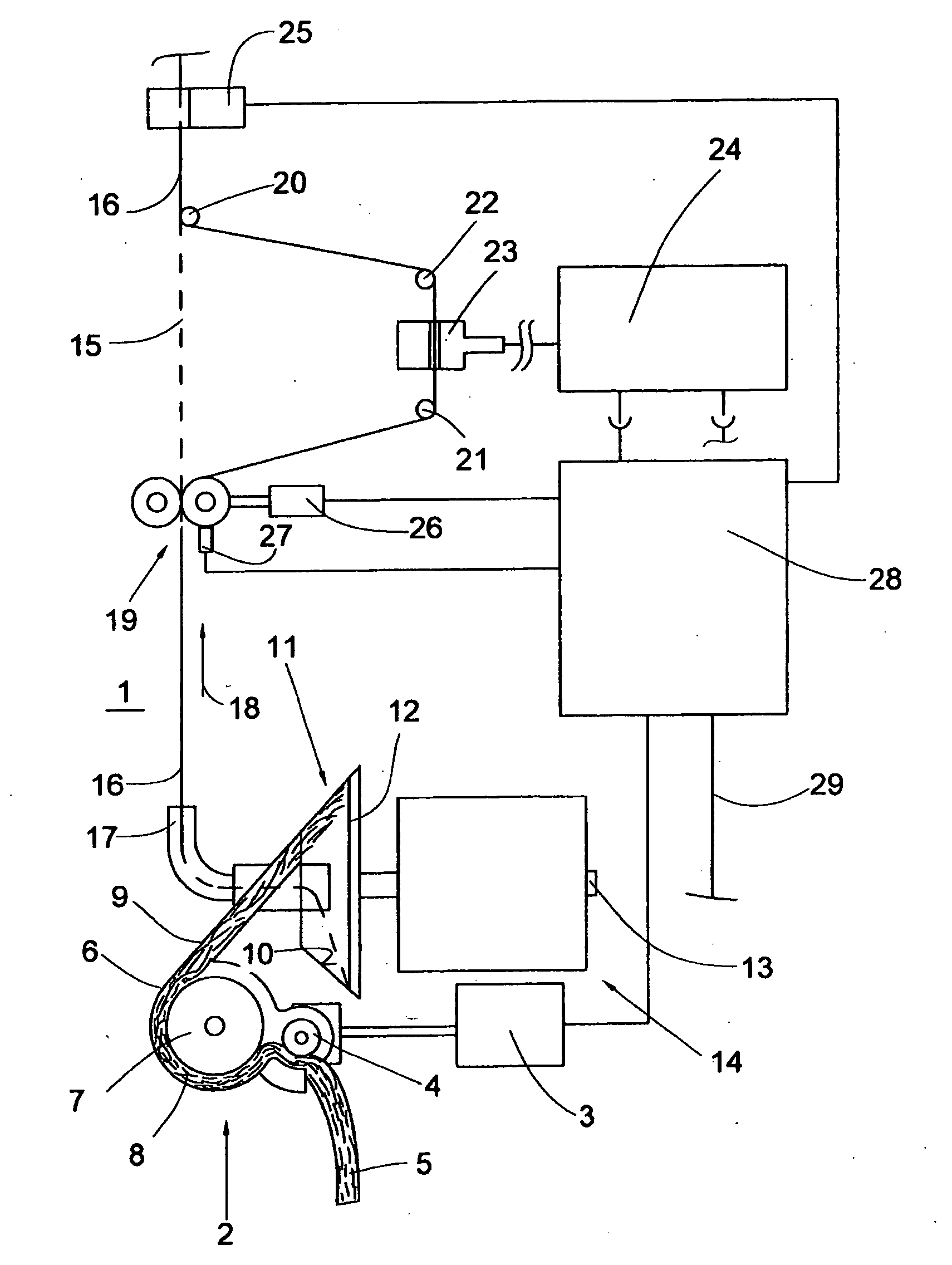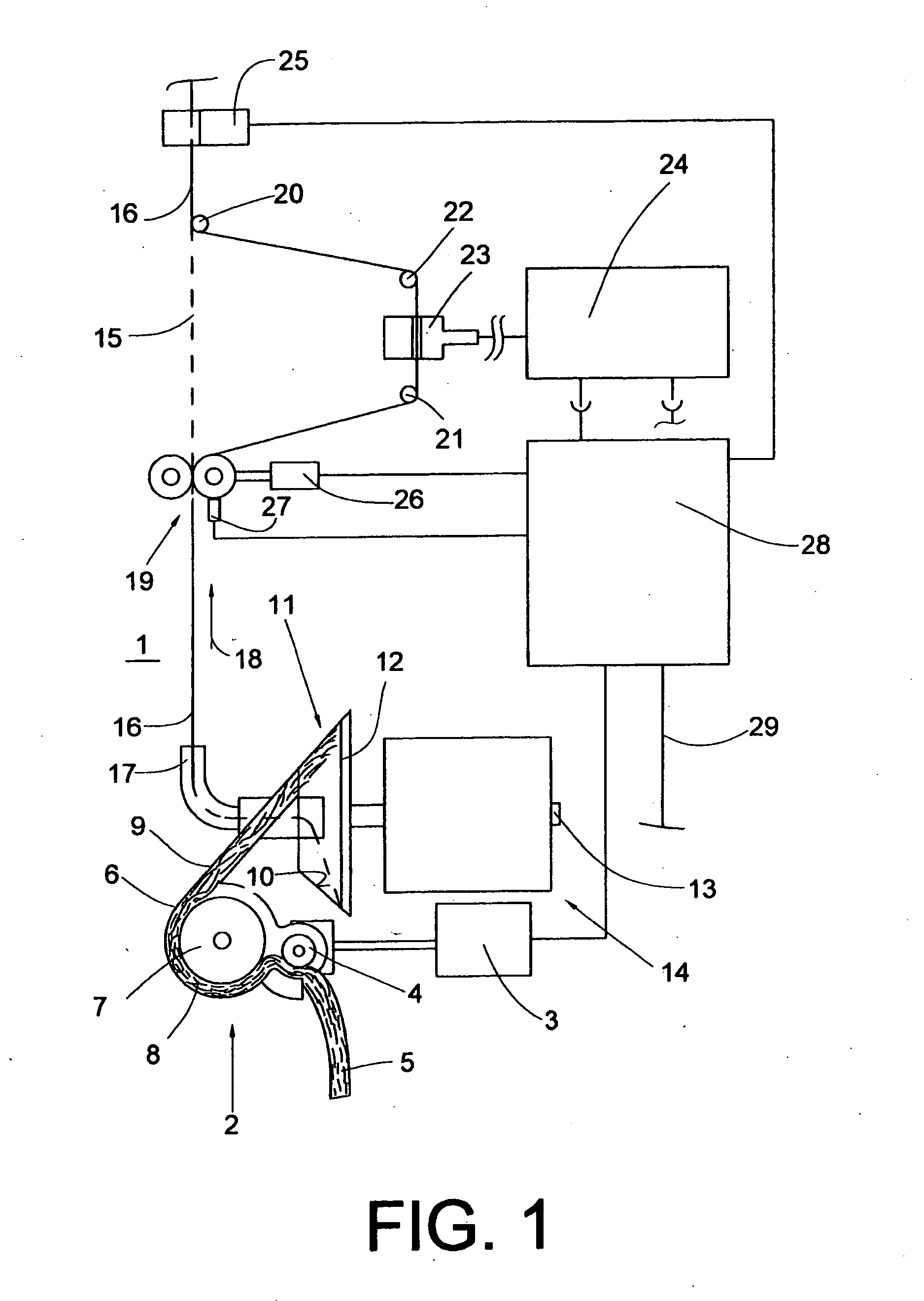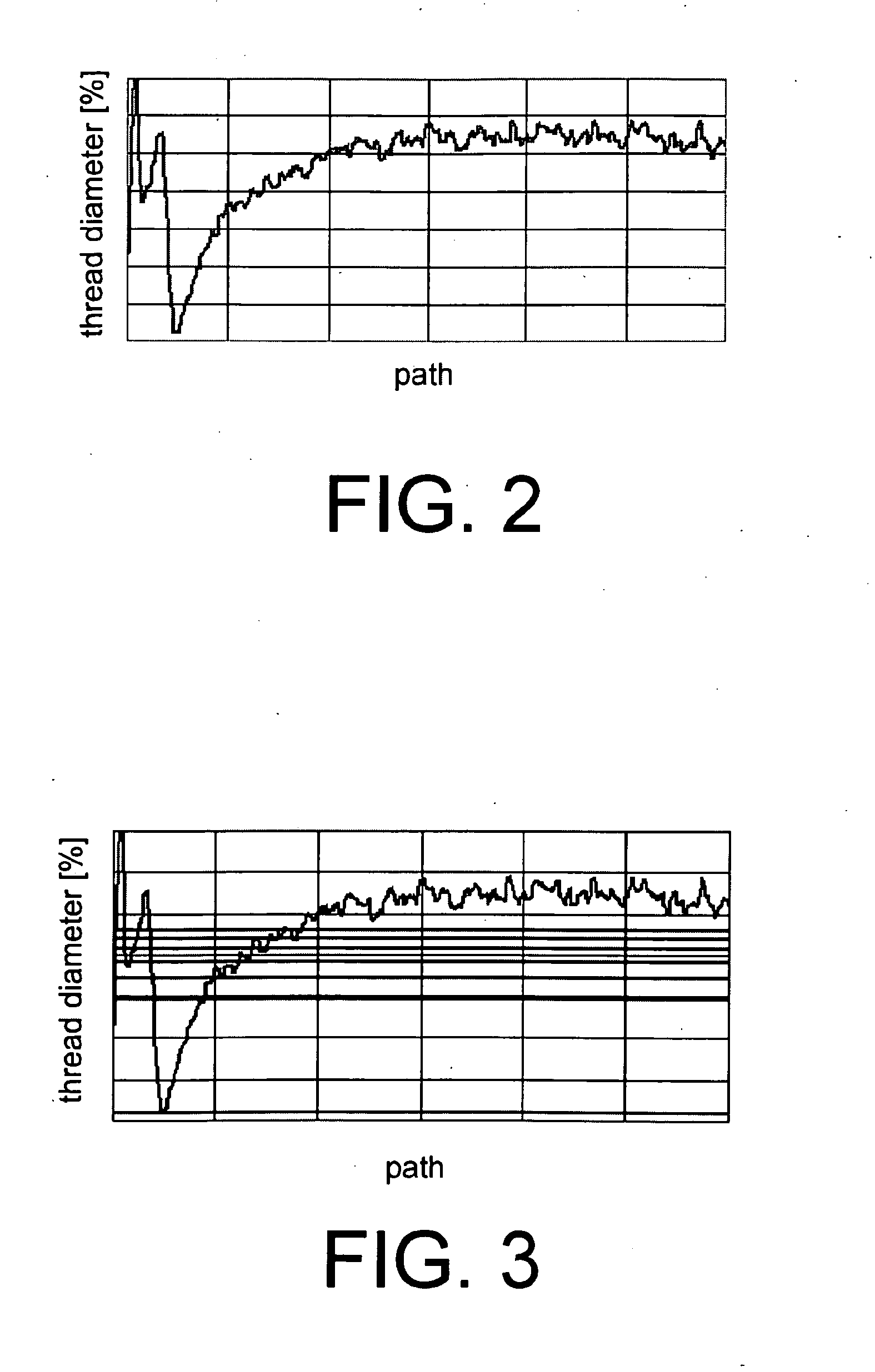Method for Piecing a Yarn and Rotor Spinning Machine for Carrying Out the Method
- Summary
- Abstract
- Description
- Claims
- Application Information
AI Technical Summary
Benefits of technology
Problems solved by technology
Method used
Image
Examples
Embodiment Construction
[0041]FIG. 1 schematically shows a side view of one half of an open-end rotor spinning machine producing cross-wound bobbins.
[0042]Rotor spinning machines of this type have, as known, between their end frames (not shown), a large number of similar spinning stations 1, the components of which are driven by a single motor. The spinning station 1 has an opening device 2, into which a fiber band 5 is introduced by means of the feed roller 4. The feed roller 4 is driven by a continuously adjustable feed motor 3. The fiber band 5 is fed to an opening roller 7 rotating in the housing 6 and driven by a single motor and which opens the fiber band 5 supplied into individual fibers 8.
[0043]The separated fibers 8 arrive through the fiber guide channel 9 onto the conical slip face 10 of a spinning rotor and from there into the fiber collecting groove 12. From the fiber collecting groove 12, the spun yarn 16 is drawn through the fiber draw-off tube 17 in the direction of the arrow 18 with the aid...
PUM
| Property | Measurement | Unit |
|---|---|---|
| Fraction | aaaaa | aaaaa |
| Length | aaaaa | aaaaa |
| Diameter | aaaaa | aaaaa |
Abstract
Description
Claims
Application Information
 Login to View More
Login to View More - R&D
- Intellectual Property
- Life Sciences
- Materials
- Tech Scout
- Unparalleled Data Quality
- Higher Quality Content
- 60% Fewer Hallucinations
Browse by: Latest US Patents, China's latest patents, Technical Efficacy Thesaurus, Application Domain, Technology Topic, Popular Technical Reports.
© 2025 PatSnap. All rights reserved.Legal|Privacy policy|Modern Slavery Act Transparency Statement|Sitemap|About US| Contact US: help@patsnap.com



